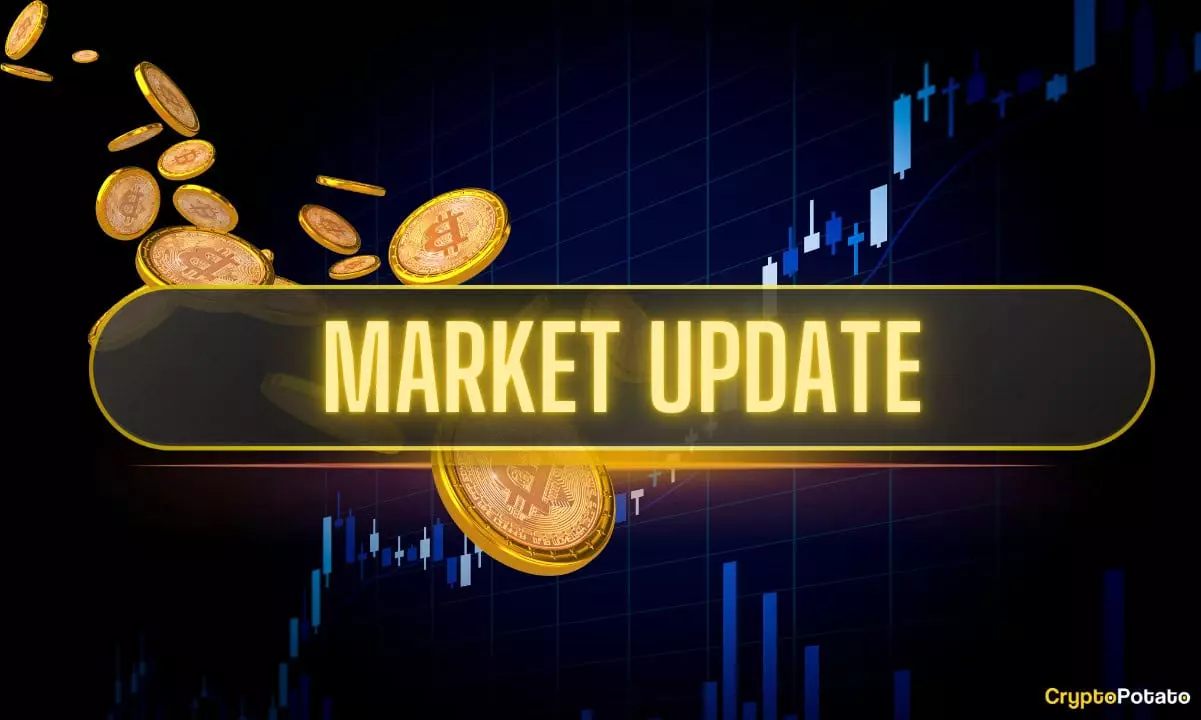The past week has been a vivid tableau of contrasts, especially in the volatile world of cryptocurrencies. With global trade tensions simmering between the United States and China, it’s easy to overlook the dramatic swings in Bitcoin’s valuation. After an unsettling dip below $75,000, Bitcoin managed to rally, closing the week strong at around $82,000. A momentary reprieve from tariffs—except for those targeting China—gave Bitcoin traders a glimmer of hope. By Sunday evening, Bitcoin had climbed to $85,000, only to tap into a new peak of approximately $86,000 on Monday.
However, such highs came paired with swift retractions. The cryptocurrency suffered declines that seemed almost preordained, echoing the unpredictability of global markets. While the previous week painted a picture of heightened volatility, Bitcoiner’s optimism appeared repressed through the ongoing tribulations of U.S. monetary policy, which ultimately seemed to confront them with the harsh reality that Fed Chair Jerome Powell’s hawkish rhetoric would likely hinder any bullish momentum.
Bitcoin’s Staunch Dominance amidst Altcoin Fluctuations
One noteworthy aspect of this week has been Bitcoin’s market dominance, which has now surpassed 60%. This figure resonates deeply with many traders, reminiscent of its market behavior four years prior. However, the current landscape is more complex; the sheer volume of Bitcoin in circulation today presents a vastly different narrative compared to earlier years. Despite the emergence of various altcoins performing remarkably well—like Bitcoin Cash and Solana—Bitcoin’s stronghold remained steadfast.
Indeed, Bitcoin doesn’t merely act as a market leader; it serves as the bedrock upon which many altcoins attempt to find footing. Consequently, as other digital assets waver, Bitcoin users and holders can exhibit a sense of stability during turbulent times—something that investor confidence heavily relies upon. While altcoins may attract short-term thrill-seekers, Bitcoin fundamentally retains its place as the “blue chip” of the cryptocurrency marketplace.
Whale Accumulation: An Indicator of Promise or Panic?
In an intriguing twist, large-scale Bitcoin investors, colloquially dubbed as “whales,” have been aggressively buying into the market. These transactions, discernibly notable for entities holding between 1,000 and 10,000 BTC, suggest a growing belief in Bitcoin’s long-term viability. Their actions beg a compelling question: Is this a vote of confidence, or are these whales scurrying to safeguard their assets against possible future declines?
As Bitcoin’s price has stabilized within the $84,000 to $85,000 bracket, the sentiment surrounding larger investors seems intriguingly defiant, hinting at a potential belief in an impending surge. Yet, one cannot ignore the possibility that such accumulation could also indicate a sense of panic—whales loading up during uncertain times might suggest a defensive strategy.
Policy Intrigues: The U.S. Government’s Currency Considerations
An equally captivating development this week emerged from the White House, as advisory figures floated the idea of creating a national Bitcoin reserve, potentially backed by gold and financed through tariffs. Is this a sign that Bitcoin is gaining acceptance in mainstream economic discussions? Such proposals indicate a shift in narrative, as governments begin to acknowledge the utility and significance of cryptocurrencies as potential economic stabilizers.
However, venturing into national Bitcoin reserves raises several questions about the government’s motives. Are we witnessing genuine acceptance, or merely an opportunistic move to harness the volatile asset’s possibilities as a revenue stream? In any case, these convoluted policy strategies reflect the deepening entanglement of traditional finance with the world of decentralized currency, and they may set an important precedent for how cryptocurrencies will be treated in future economic frameworks.
Market Predictions: A Potential Wait-and-See Phase?
As Bitcoin alternates between seemingly unstoppable ascents and sharp descents, analysts predict the market may be entering a wait-and-see phase. With a realized capitalization around $872 billion, many investors appear cautious, potentially waiting for clearer signals before making any significant moves. Despite the buzz surrounding Bitcoin ETFs and corporate buyers participating in the space, the general sentiment suggests a gradual approach to engagement in crypto resilience.
The ever-evolving nature of assets like Bitcoin illustrates the difficulties inherent in discerning long-term trends from short-term noise. Yet, as consolidation looms, the actions of large institutional players increasingly reflect a belief in the cryptocurrency’s potential for a more robust future—a belief that balanced risk might ultimately yield the most substantial rewards. Investors should keep their eyes glued to both market metrics and the interactions between cryptocurrencies and traditional finance, as these forces may define the next chapter of Bitcoin and blockchain industry dynamics.
















Leave a Reply